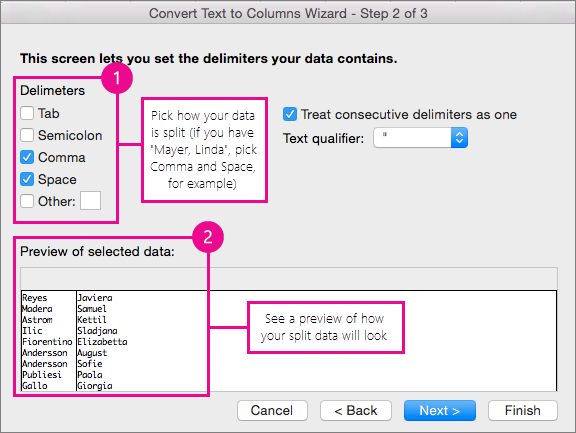How To Combine Label Cells In Word For Mac 2011
Posted By admin On 30.01.19That worked great for me--thanks for the suggestion! In Word 2013, it was the Mailings -- Start Mail Merge menu option, and I used the Wizard and for 'Select recipients' I picked 'Use an existing list' and then found my Excel.xlsx file. Apr 19, 2015 How to merge documents and create labels on a mac.
Advertisement When you think of Excel ( Not as comfortable with Excel as you would like? Start with simple tips for adding formulas and managing data. Follow this guide, and you'll be up to speed in no time.), you probably think of numbers, calculations, and formulas.

But, you also add text to spreadsheets, like headings, descriptions, or people’s names. Today we’ll cover various ways of working with text in Excel spreadsheets. We discuss several different functions for working with text. Whenever you use a function, always start it with an equals sign (=).
Wrap Text in a Cell When you enter text in a cell that’s wider than the cell, the text goes past the right border of the cell by default.  But it’s easy to have the text wrap to fit the column width. The text wrap adjusts automatically when you change the width of the cell. To make text wrap in a cell, select the cell and click the Wrap Text button in the Alignment section of the Home tab. The text is wrapped in the cell and the row height automatically adjusts to fit the text. The generic form of the COUNTIF function for counting any number of text characters is: =COUNTIF(cellrange,'*') The cellrange represents any range of cells like B2:B9.
But it’s easy to have the text wrap to fit the column width. The text wrap adjusts automatically when you change the width of the cell. To make text wrap in a cell, select the cell and click the Wrap Text button in the Alignment section of the Home tab. The text is wrapped in the cell and the row height automatically adjusts to fit the text. The generic form of the COUNTIF function for counting any number of text characters is: =COUNTIF(cellrange,'*') The cellrange represents any range of cells like B2:B9.
The asterisk between the quotes is a wildcard character that represents any matching number of text characters. There are a few things to note about what are considered text characters: • The logical values TRUE and FALSE are not counted as text. • Numbers that are entered as text are counted in the wildcard character (*).
How To Add Cells In Word For Mac
• A blank cell that begins with an apostrophe (‘) is counted. For example, to count the number of cells containing text in the cell range A2:G9 in the following worksheet, we enter “=COUNTIF(“. Then, to enter the cell range, we select the cells we want to include in the count. The COUNTIF function is not case sensitive. Then, we type a comma (,) and the wildcard character (*) surrounded by double quotes.
Smart disk image maker for mac. Full resolution of the original files is maintained; printing up to A1 retains the quality of the images. TurboCollage is great — it’s easy to use, doesn’t require a design background to use, and it has saved me hours of work. I am very happy with TurboCollage. Trichet Jimmy, System Administrator, France Thank you for quick and efficient customer service. There is excellent control over the look of the layout with the capability of adding text if necessary.
Press Enter to complete the function entry and view the result in the cell. Count Cells Containing Specific Text You can also use the COUNTIF function to count how many cells contain specific text characters. The generic function for counting the occurrences of a specific string text characters is: =COUNTIF(cellrange,'txt') Just like in the previous section, the cellrange represents any range of cells like B2:B9. We put the string of text characters we want to find between double quotes. For example, to count the number of cells containing “Pencil” in the cell range A2:G9 on following worksheet, we enter the following function: =COUNTIF(A2:G9,'Pencil') This finds all the cells containing just the word “Pencil” with no other text in the cell. Because the COUNTIF function is not case sensitive, it will find all cells containing “Pencil” or “pencil”. The COUNTIFS function allows you to count cells with text but exclude cells with specific text characters.
For example, we use COUNTIFS in the following way to find all cells containing any text except for “Pencil”. =COUNTIFS(A2:G9,'*',A2:G9,'Pencil') For the COUNTIFS function, you first give it the range and the text you want to find. Then, give it the same range again and the text you want excluded. The “” is used to exclude whatever text follows. When using either the COUNTIF or COUNTIFS function, you can add an asterisk on one or both sides of the string to find cells that contain that string surrounded by any number of text characters (or none). For example, to find all cells containing the letter “j”, we use the following function: =COUNTIF(A2:G9,'*j*') Again, because the COUNTIF function is not case sensitive, cells containing “j” or “J” will be counted.